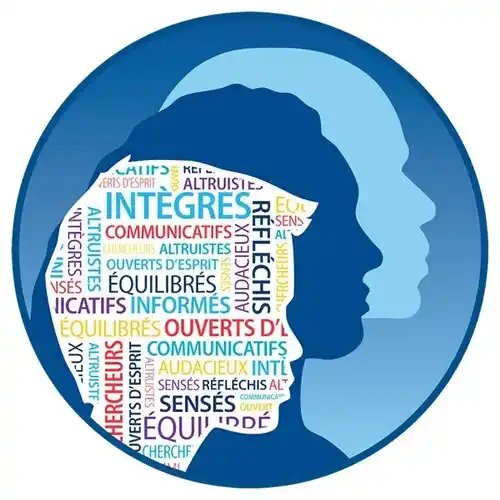TOK Exhibition Object 1: Encyclopedia Britannica Set
- Optional Theme: Knowledge and Language
- Rationale: The Encyclopedia Britannica set, a compendium of human knowledge across a vast array of subjects, encapsulates the essence of what counts as knowledge within the realm of language and documentation. This comprehensive collection represents a curated synthesis of information and insights deemed significant and reliable enough to be documented for posterity. It underscores the role of language as a medium for codifying and transmitting knowledge, reflecting the collective endeavor to distill and organize human understanding into accessible formats. The criteria for inclusion in such an encyclopedia—accuracy, comprehensiveness, and authority—mirror the broader standards against which knowledge is measured. This object invites reflection on how the processes of selection, verification, and presentation in language shape our conception of what is worthy of being known, highlighting the intersection between linguistic expression and the validation of knowledge.
Immerse yourself in an interactive learning experience where TOK, ATTL, and the IB Learner Profile come to life! Subscribe today for complete access to our innovative resources and become part of a community of educators committed to fostering a dynamic and engaging learning environment.
Learn IB Math AA & AI with Certified IB Teachers
TOK Exhibition Object 2: Rosetta Stone Replica
- Optional Theme: Knowledge and Language
- Rationale: A replica of the Rosetta Stone serves as a symbolic artifact demonstrating the pivotal role of language in unlocking historical knowledge. The stone, inscribed with a decree in three scripts, became the key to deciphering Egyptian hieroglyphics, thus opening a gateway to understanding ancient Egyptian civilization. This object exemplifies how knowledge is not only contingent upon discovery but also upon the interpretation and translation of information across linguistic barriers. The Rosetta Stone underscores the significance of language as both a barrier and a bridge in the acquisition of knowledge, illustrating how the capacity to comprehend and communicate across different linguistic systems can transform inscrutable symbols into accessible knowledge. It reflects on the interdependence of language and knowledge, where the ability to decode and interpret languages expands the horizons of what can be known and understood about human history and culture.
 Join Top-Rated IBDP Tuitions for 2025 Exams!
Join Top-Rated IBDP Tuitions for 2025 Exams!
TOK Exhibition Object 3: Quantum Computing Processor
- Optional Theme: Knowledge and Technology
- Rationale: The quantum computing processor represents a frontier in the evolution of knowledge within the field of technology, embodying the potential to solve complex problems beyond the reach of classical computers. This object highlights the ongoing expansion of what counts as knowledge through technological innovation, where quantum mechanics principles enable the processing of information in fundamentally new ways. The development and application of quantum computing technology challenge existing boundaries of computational knowledge, promising advancements in fields ranging from cryptography to drug discovery. This processor exemplifies how the production of knowledge is influenced by technological capabilities, raising questions about the nature and limits of what can be known in an era of unprecedented computational power. It invites contemplation on how technological progress not only extends the scope of human inquiry but also reshapes our understanding of knowledge itself, by offering new tools and paradigms for exploring complex phenomena.
📚 Expert IB HL & SL Subject Tutors Available Now
TOK Exhibition Object 4: Global Positioning System (GPS) Device
- Optional Theme: Knowledge and Technology
- Rationale: The GPS device, a ubiquitous tool in navigation, epitomizes how technology mediates and enhances our spatial knowledge of the world. By utilizing a network of satellites to provide precise location data, GPS technology transforms abstract geographical information into actionable knowledge, enabling users to navigate the physical environment with unprecedented accuracy. This object illustrates the instrumental role of technological artifacts in extending human capacities to acquire and apply knowledge, demonstrating how technology not only aids in the practical application of knowledge but also influences its conceptualization. The GPS device prompts reflection on the dynamics between technological innovation and knowledge production, highlighting how advancements in technology can redefine what is possible to know and do, thereby expanding the realm of human understanding and interaction with the world.
 Ace IB Economics with Personalized IBDP Tuition
Ace IB Economics with Personalized IBDP Tuition
TOK Exhibition Object 5: A Traditional Herbal Medicine Guide
- Optional Theme: Knowledge and Indigenous Societies
- Rationale: A traditional herbal medicine guide, compiled through generations of indigenous knowledge, represents a confluence of cultural practices, empirical observations, and environmental understanding. This object exemplifies how knowledge is constructed, validated, and transmitted within specific cultural contexts, reflecting a holistic approach to health that integrates botanical knowledge with spiritual and community well-being. It challenges the conventional demarcations of what counts as knowledge by foregrounding the value of experiential, communal, and environmental wisdom. The guide underscores the diversity of knowledge systems and the importance of recognizing and integrating indigenous perspectives into broader conceptions of health and medicine. It invites consideration of the criteria by which different forms of knowledge are appraised and validated, highlighting the interplay between cultural values, empirical evidence, and historical continuity in the recognition and application of knowledge.






